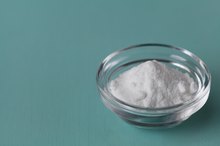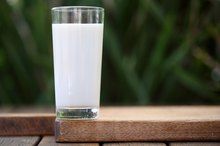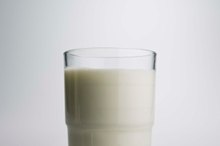What Is Tricalcium Phosphate?
Tricalcium phosphate is one of many different calcium salts found in dietary supplements. You can take tricalcium phosphate to supplement your daily calcium needs if you are concerned that you're not getting enough calcium from food sources alone. Calcium is an important mineral that your cells need in order to stay healthy.
Calcium Needs
Your body needs calcium to maintain normal healthy function. You're probably most familiar with calcium in terms of its role in the skeletal system -- it helps maintain your bone health and density. Calcium is also crucial to several other body functions. Your heart needs calcium to maintain its rhythm and contractions of the skeletal muscles require calcium.
- Your body needs calcium to maintain normal healthy function.
- Your heart needs calcium to maintain its rhythm and contractions of the skeletal muscles require calcium.
Calcium Sources
What Effect Does Tums Have on Your Calcium Level?
Learn More
You can get the calcium your body needs from your diet. Dairy products and leafy green vegetables are good sources of the mineral. Many people opt to augment their calcium intake with supplements. Tricalcium phosphate is a popular supplemental form of calcium. It consists of positively charged particles of calcium combined with negatively charged particles called phosphates, which have the chemical formula PO4.
- You can get the calcium your body needs from your diet.
- Dairy products and leafy green vegetables are good sources of the mineral.
Benefits
Tricalcium phosphate offers no particular benefit over other common forms of calcium supplements, including calcium carbonate and calcium citrate. Tricalcium phosphate may be slightly less expensive than calcium citrate, although it may be a bit more than calcium carbonate. Your body absorbs tricalcium phosphate effectively, just as most people absorb both calcium carbonate and calcium citrate without trouble. In general, you can pick the best calcium supplement for the money and rest assured that you're getting the calcium you need.
- Tricalcium phosphate offers no particular benefit over other common forms of calcium supplements, including calcium carbonate and calcium citrate.
- Your body absorbs tricalcium phosphate effectively, just as most people absorb both calcium carbonate and calcium citrate without trouble.
Phosphorus
Differences Between Calcium Phosphate & Calcium Carbonate
Learn More
The human body needs phosphorus as well as calcium, and tricalcium phosphate supplies both. According to the Linus Pauling Institute, it's rare for Americans eating a varied diet to be phosphorus deficient because the mineral is common in many foods. The phosphorus in tricalcium phosphate will not harm you but it is not required or particularly beneficial for most people.
Related Articles
References
- Human Physiology; Lauralee Sherwood, Ph.D.; 2004
- Linus Pauling Institute: Phosphorus
- Corliss J. Choosing a calcium supplement. Harvard Health Publishing, Harvard Medical School. Updated October 13, 2020.
- NIH Office of Dietary Supplements. Calcium fact sheet for health professionals. Updated March 26, 2020.
- Chiavacci A. All about calcium supplements. Brigham Health.
- NIH National Cancer Institute. NCI drug dictionary, calcium citrate.
- Klemm S. Calcium. The Academy of Nutrition and Dietetics. Updated April 2020.
- Tankeu AT, Ndip Agbor V, Noubiap JJ. Calcium supplementation and cardiovascular risk: A rising concern. J Clin Hypertens. 2017;19(6):640-646. doi:10.1111/jch.13010
- Ilich JZ, Kelly OJ, Liu P-Y, et al. Role of calcium and low-fat dairy foods in weight-loss outcomes revisited: results from the randomized trial of effects on bone and body composition in overweight/obese postmenopausal women. Nutrients. 2019;11(5):1157. doi:10.3390/nu11051157
- Wellspan Health. Calcium citrate. Updated December 13, 2017.
- John Hopkins Medicine. Calcium supplements: Should you take them?.
Writer Bio
Kirstin Hendrickson is a writer, teacher, coach, athlete and author of the textbook "Chemistry In The World." She's been teaching and writing about health, wellness and nutrition for more than 10 years. She has a Bachelor of Science in zoology, a Bachelor of Science in psychology, a Master of Science in chemistry and a doctoral degree in bioorganic chemistry.









